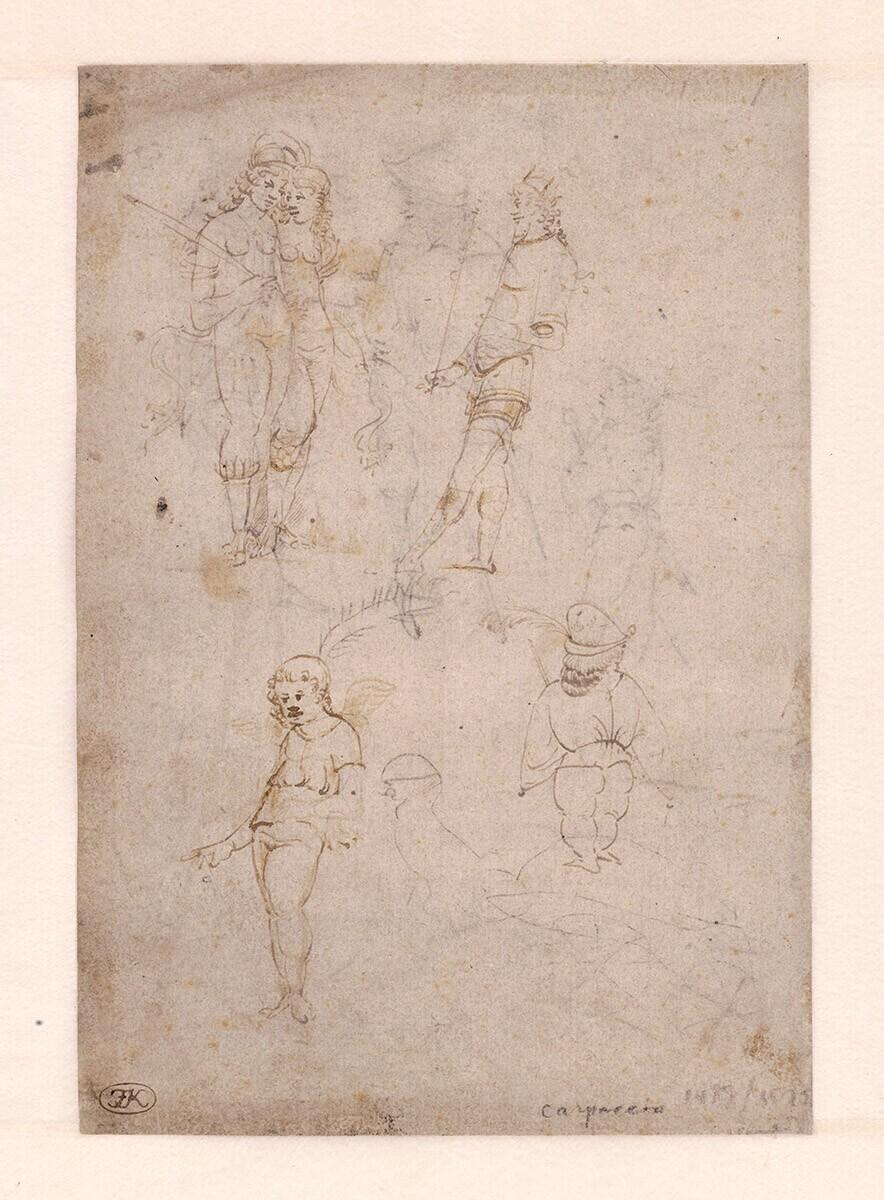Specifications
| Title | Five Figure Studies |
|---|---|
| Material and technique | Black chalk, pen and brown ink, traces of gold paint, incised in places |
| Object type |
Drawing
> Two-dimensional object
> Art object
|
| Location | This object is in storage |
| Dimensions |
Height 191 mm Width 131 mm |
|---|---|
| Artists |
Circle of:
Vittore Carpaccio
Maker: Anoniem |
| Accession number | I 491 recto (PK) |
| Credits | Loan Stichting Museum Boijmans Van Beuningen (former Koenigs collection), 1940 |
| Department | Drawings & Prints |
| Acquisition date | 1940 |
| Creation date | in circa 1470-1500 |
| Watermark | geen / none (vV, 6P) |
| Inscriptions | 'Carpaccio' (below right, black chalk), '1479/1525(?)' (below right, pencil), '40' (verso, below right, pen and brown ink) |
| Collector | Collector / Franz Koenigs |
| Mark | unknown mark (wagonwheel, duplicated, below right, with dry pen), F.W. Koenigs (L.1023a) |
| Provenance | Art dealer Julius W. Böhler (1883-1966), Lucerne; Franz W. Koenigs (1881-1941, L.1023a), Haarlem, acquired in 1929 (manner of Vittore Carpaccio); D.G. van Beuningen (1877-1955), Rotterdam, acquired with the Koenigs Collection in 1940 and donated to Stichting Museum Boijmans Van Beuningen |
| Research |
Show research Italian Drawings 1400-1600 |
| Literature | Fenyö 1965, pp. 33 and 37, ill. 6, 7; Muraro 1977, p. 76, fig. 124, 125 (Padua) |
| Material | |
| Object | |
| Geographical origin | Italy > Southern Europe > Europe |
| Place of manufacture | Venice > Veneto region > Italy > Southern Europe > Europe |
Do you have corrections or additional information about this work? Please, send us a message























